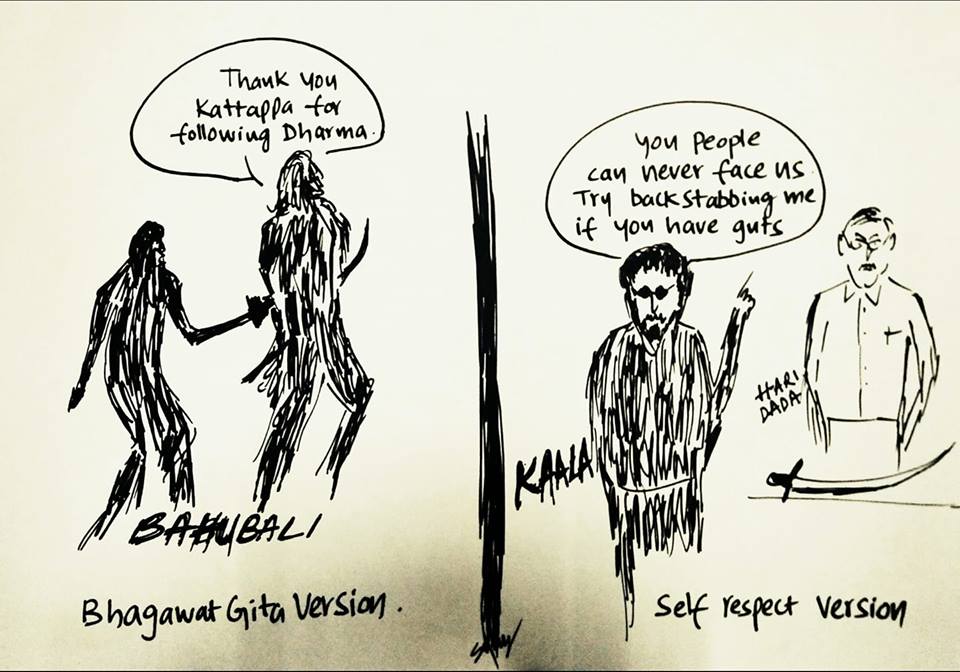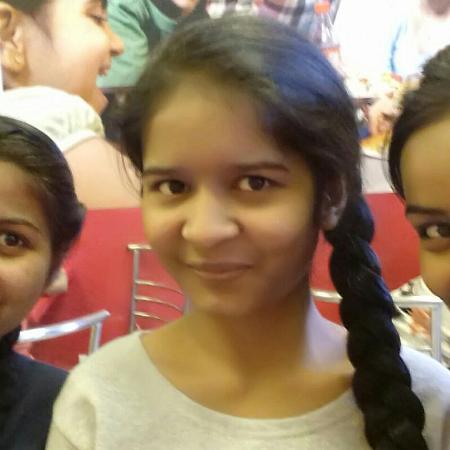Vinay Shende
At the outset, let me say that this is not a film review and I am no expert on the technicalities of film making. I won’t be talking about the plot of the movie. If anyone sees it as only a gangster movie, then they are missing the point. Director Pa Ranjith weaves various issues into a story and tries to convey assertion. And what a way he does it! One article is not enough to explain all this. Let me share some of my observations in brief.

The Bahujan world and the Brahmin world shall always collide, not converge, as Kuffir says in one of this articles.
I watched the movie a few times. In Tamil (with English subtitles) as well as in Hindi. Once I went with fellow Bahujan friends; and at other times alone, watching it with Brahmin-Savarnas (assuming) beside me. The reactions of the Bahujans while watching any important dialogue was that of enjoyment, happiness. Whereas the Savarna folks were squirming in their seats, especially whenever images of Ambedkar, Phule, Buddha were being shown in the movie.
The nuances of this movie–only someone who has been oppressed would understand. For the oppressors, they won’t understand those nuances and it is business as usual for them. Most of the Savarnas might have come to watch the movie thinking that it is a typical Rajinikanth movie with lots of fights, stunts.
Police machinery siding with People in Power
Throughout the movie, the police is seen siding with the people in power. The police are being shown beating the residents multiple times in the riots and stopping the rioters. One set of policemen are also seen trying to molest the Marathi girl Toofani in the movie.
In recent history, there are many instances like the Ramabai Ambedkar firing in the 1990s where Inspector Kadam was seen as the one who opened fire at peaceful protestors. Or even the recent police action that was taken after the Bandh called (on 3rd of January, 2018) to protest the attack on Bhima Koregaon marchers. Many youth were beaten up and put behind bars and false cases registered against them.
In one of the scenes, Veliappan (Selvi’s brother) taunts the police calling them ‘men in Khaki shorts’. Khaki shorts used to be worn earlier by the RSS.
Direct Attack on the Oppressors
The film identifies the oppressors in a direct fashion. There is no hidden enemy here. Hari Abhyankar (Nana Patekar) is shown clearly as an upper caste individual. The surname Abhyankar is normally used by upper castes in Maharashtra. In addition, a picture of Parshuram is displayed in his house, and his company is called Manu Realty: these are some of the subtle pointers that indicate Hari Abhyankar is a Brahmin.
Another example is the confrontation between Zareena (Huma Qureshi) and Kaala (Rajinikanth) in her house. He tells her clearly that Hari is the one behind all the problems.
Hari, in one of his speeches, also mentions that people who speak against him are ‘anti-nationals’ and they need to be taught a lesson. This bears an uncanny resemblance to the attitude of the current regime in power.
The Women in the movie
Enough has been said about all the women characters in the movie. They all have been shown as very strong and smashing patriarchal norms. Kaala himself creates a culture where he treats them with respect and equality. He doesn’t allow any man/woman to touch his feet for blessings. He believes in handshakes. Kaala stops Hari’s granddaughter from touching his feet, even though Hari insists.
When Zareena meets Hari for the first time in his house, Hari expects her to touch his feet for blessings which makes her upset. Later, when Zareena wins an argument, she gives a handshake to Hari and tells him to teach his family about equality through a handshake.
The two women in Kaala’s life, Zareena and Selvi, are both shown with great dignity. Both are respectful to each other and deal with the tricky situation with Kaala with great maturity.
Another character Toofani (Anjali Patil) is shown as a firebrand activist. She addresses Kaala’s family by their names, even jokes with them. She never shies away from a confrontation.
Kaala, during the strike, tells his people, ‘why should only women do the cooking’.
Notions of “Purity” and Caste
Hari doesn’t touch the glass of water offered in Kaala’s house by his wife Selvi. Later Selvi emphasizes to others why Hari didnt drink water (due to Kaala belonging to a lower caste). Hari talks about the concept of purity and cleanliness all the time. Whereas Kaala drinks the water offered in Nana’s house by his granddaughter.
When Hari shakes Kaala’s hand for the first time, he gets uncomfortable and wipes his hands.
In an another scene, Hari says that he finds the colour of Kaala’s skin, black, obnoxious, it makes him squirm. To which Kaala responds that Hari’s mind had been corrupted.
Usage of Icons
Throughout the movie, pictures of Ambedkar, Phule, Buddha, Iyothee Thass, Periyar, Marx, Lenin, are shown, without diluting the focus from the scenes. This is an important element: using various Bahujan icons and communicating how important are the roles they play in creating a culture & a narrative.
The Buddha Vihar is shown as the epicentre of the revolution. In reality, there are many Buddha vihars across the country that have helped Bahujan students and the Ambedkarite social, political, and cultural movement.

Land Rights
This is the pivotal part of the movie. The disproportionate resources that the upper castes possess is a reflection of the caste system. The movie depicts a struggle for rights.
Kaala says that it is only due to certain laws that the oppressed are safe in this country. This hints at things like the Constitution, the Prevention of SC/ST Atrocities Act etc.
Unity of the Oppressed
In various scenes, people in Dharavi seem to be living in harmony. People of different religions, castes, etc. Whenever they get cornered they stick together even more, reminding one of the Dalit-Muslim unity in times of trouble.
In the end, I would like to emphasise that this is a Pa Ranjith film completely and he drives the story with music, grip and more importantly, a soul.
~~~
Vinay Shende is an Ambedkarite working in the Corporate Sector.
Illustration courtesy: Unnamati Syamasundar. Picture courtesy: the internet.









